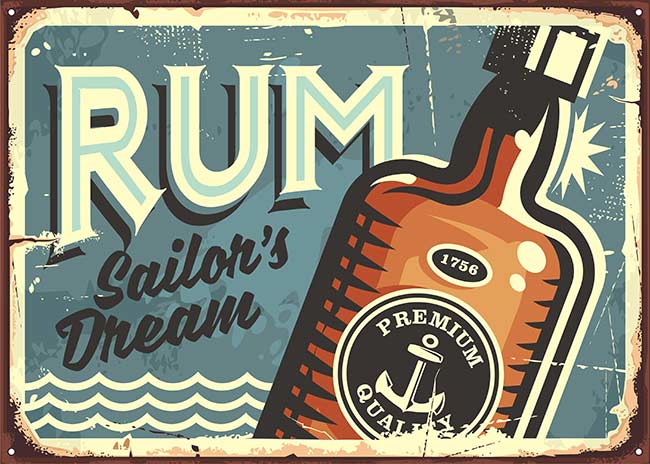How To Make Rum At Home

Make sure to like Living Green and Frugally on Facebook, Shop at amazon to help support my site and explore our PINTEREST BOARDS for innovative ways you can become self-sufficient.
Making rum at home is a fascinating process that allows you to create a unique and personalized spirit. Rum, a distilled alcoholic beverage made from sugarcane byproducts such as molasses or sugarcane juice, has a rich history and is enjoyed worldwide in various forms, from light rums used in cocktails to dark, aged rums savored neat. This recipe will guide you through the process of making rum at home, detailing each step for clarity and ease.
What Is Rum?
Rum is a versatile and flavorful spirit derived from sugarcane byproducts. It is known for its distinct taste and can be enjoyed in numerous ways, whether mixed into cocktails or sipped on its own. The process of making rum involves fermenting the sugars present in molasses or sugarcane juice, followed by distillation and aging (if desired) to develop its unique flavors.
What Equipment Is Required to Make Rum at Home?
To make rum at home, you will need the following equipment:
- Large Pot: For boiling the water and mixing the ingredients.
- Fermenter with Airlock: To ferment the mixture in a controlled environment.
- Mixing Spoons: For stirring the ingredients.
- Sanitizer: To ensure all equipment is clean and free from contaminants.
- Thermometer: To monitor the temperature of the mixture.
- Hydrometer: To measure the specific gravity of the mixture before and after fermentation.
With these essentials and a bit of patience, you can embark on the rewarding journey of making your own rum. Let’s get started!
Homemade Rum Recipe
Ingredients:
- 3 gallons of water
- 2 gallons of molasses
- 2-3 pounds of sugar (brown or white)
- Mixed spices (optional: cinnamon, vanilla, nutmeg, allspice)
- 1 teaspoon Epsom salt
- 1 packet of yeast (suitable for rum or high-alcohol fermentation)
Equipment:
- Large pot
- Fermenter with airlock
- Mixing spoons
- Sanitizer (for brewing equipment)
- Thermometer
- Hydrometer
Instructions:
- Boil Water
- Bring 3 gallons of water to a rolling boil in a large pot.
- Add Molasses
- Reduce heat and gradually stir in 2 gallons of molasses until fully dissolved.
- Add Mixed Spices (Optional)
- Add your choice of spices (cinnamon, vanilla, nutmeg, allspice) and let simmer for 10-15 minutes.
- Add Sugar
- Stir in 2-3 pounds of sugar until completely dissolved.
- Sanitize Equipment
- Thoroughly sanitize all equipment (fermenter, spoons, etc.) using a brewing sanitizer according to the manufacturer’s instructions.
- Rehydrate Yeast
- In a small bowl, rehydrate the yeast in warm water (95-100°F) for 10-15 minutes until frothy.
- Add Epsom Salt
- Stir 1 teaspoon of Epsom salt into the molasses and sugar mixture.
- Transfer Mixture to Fermenter
- Carefully pour the mixture into the sanitized fermenter.
- Cool Down
- Allow the mixture to cool to 70-75°F by placing the fermenter in an ice bath or using a wort chiller. Monitor the temperature with a thermometer.
- Measure Specific Gravity
- Use a hydrometer to measure the initial specific gravity (SG) of the mixture. Record this value.
- Pitch Yeast
- Once the mixture has cooled to the appropriate temperature, add the rehydrated yeast. Stir gently to distribute evenly.
- Seal and Ferment
- Seal the fermenter with an airlock. Place it in a dark, warm location with a stable temperature. Allow the mixture to ferment for 7-14 days, checking the SG periodically.
Notes:
- Safety: Adhere to local laws and regulations regarding home distillation.
- Sanitization: Ensure all equipment is thoroughly sanitized to prevent contamination.
- Fermentation: Fermentation times can vary based on yeast strain and environmental conditions. Aim for a stable SG reading over consecutive days to determine when fermentation is complete.
Enjoy making and tasting your homemade rum! Drink responsibly.
Disclaimer
Important Legal Notice:
Home distillation of alcohol, including making rum, is illegal in many countries and regions without proper permits or licenses. Laws and regulations vary significantly depending on your location. Before attempting to make rum at home, it is crucial to check and comply with your local laws and regulations.
In the United States, for instance, the federal government strictly regulates the production of distilled spirits. Home distillation without a proper license from the Alcohol and Tobacco Tax and Trade Bureau (TTB) is illegal and can result in severe penalties, including fines and imprisonment. Other countries may have similar restrictions or specific requirements for obtaining a license.
Always ensure you are fully informed about and compliant with your local laws before engaging in home distillation activities. This guide is intended for educational purposes only and does not advocate or condone illegal activities. Drink responsibly and always prioritize safety.